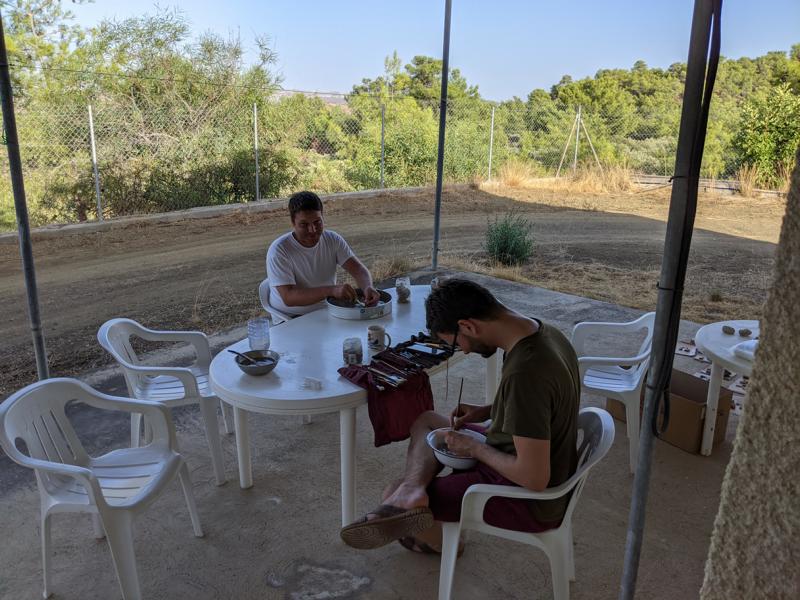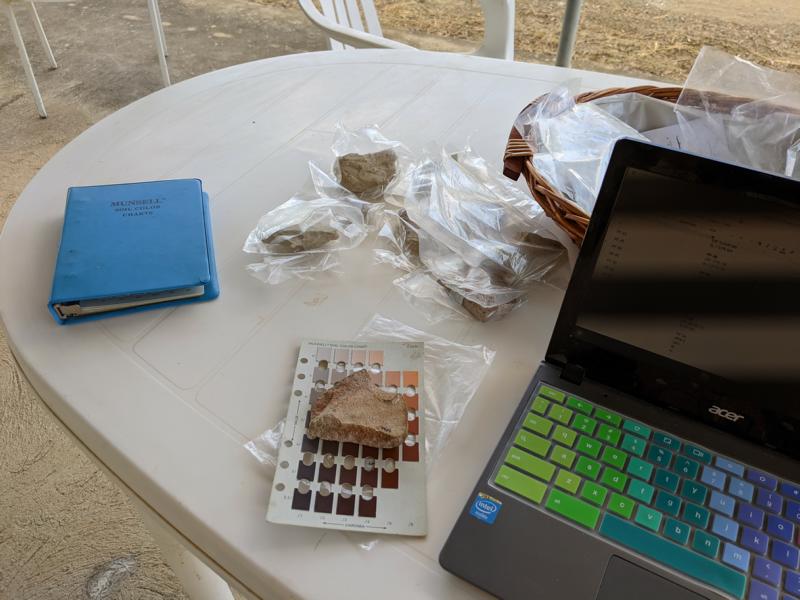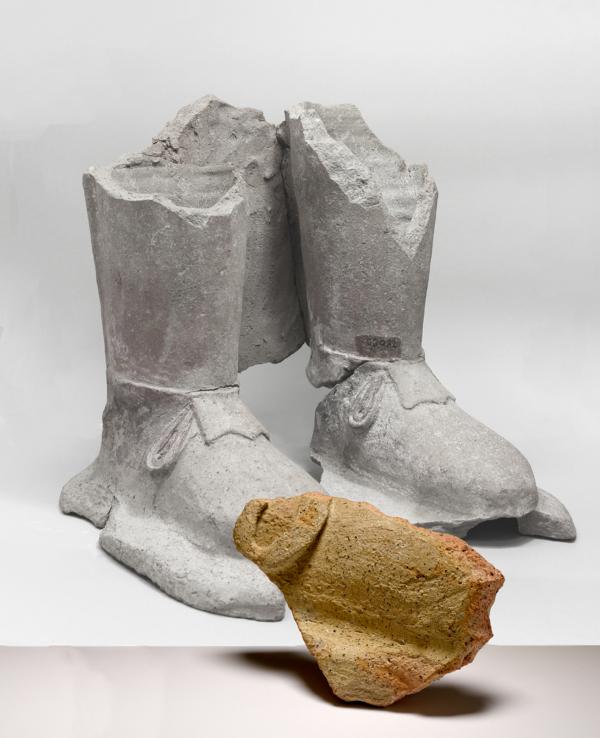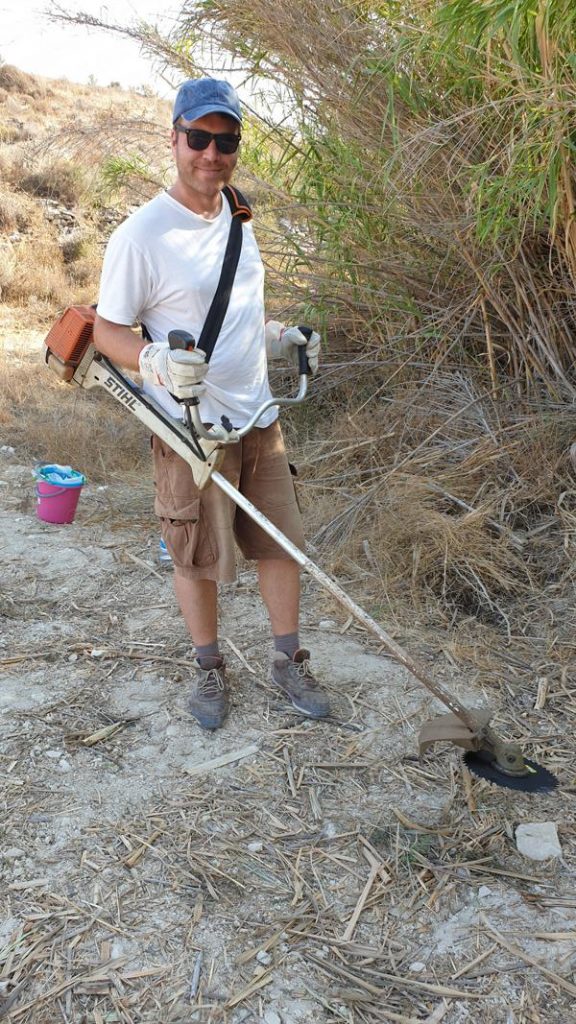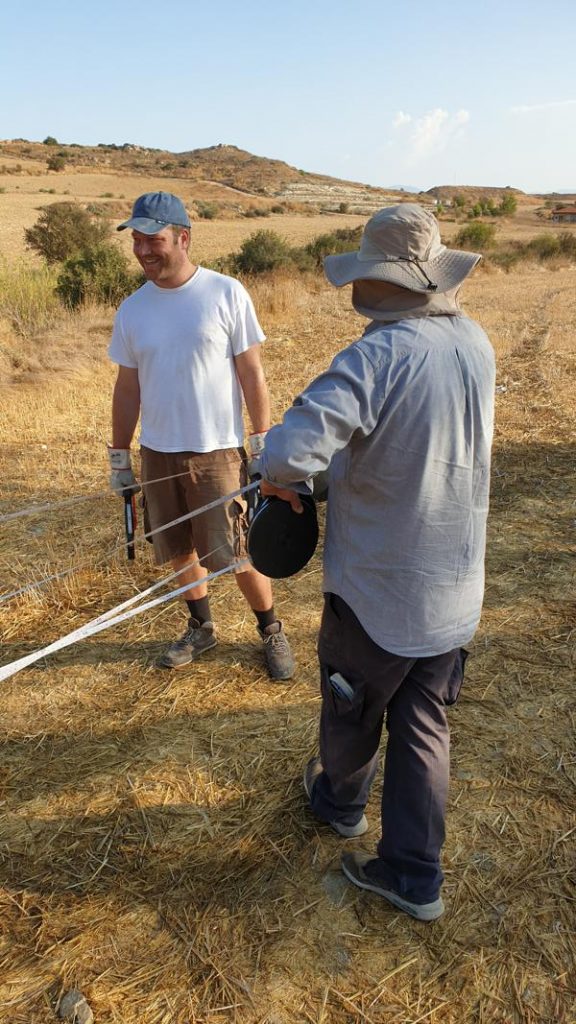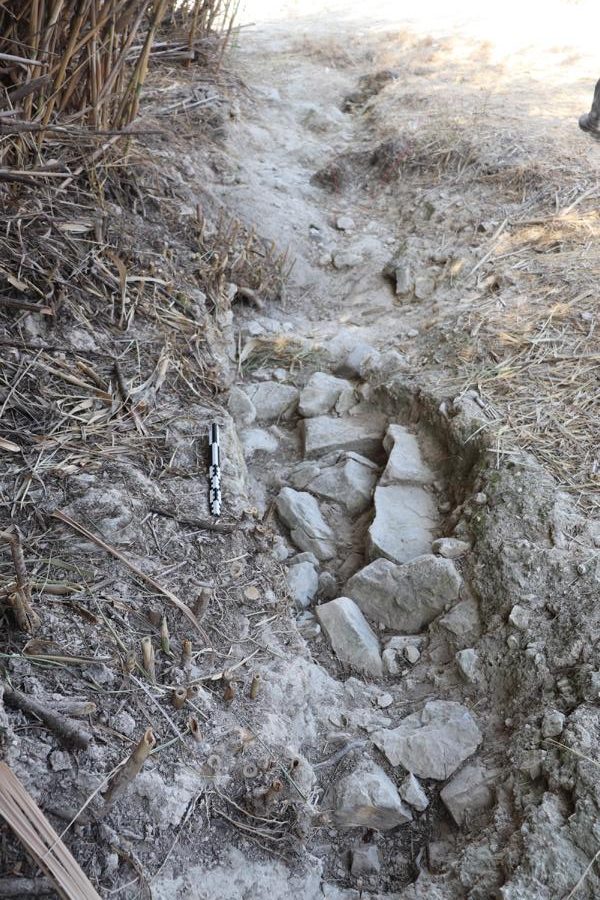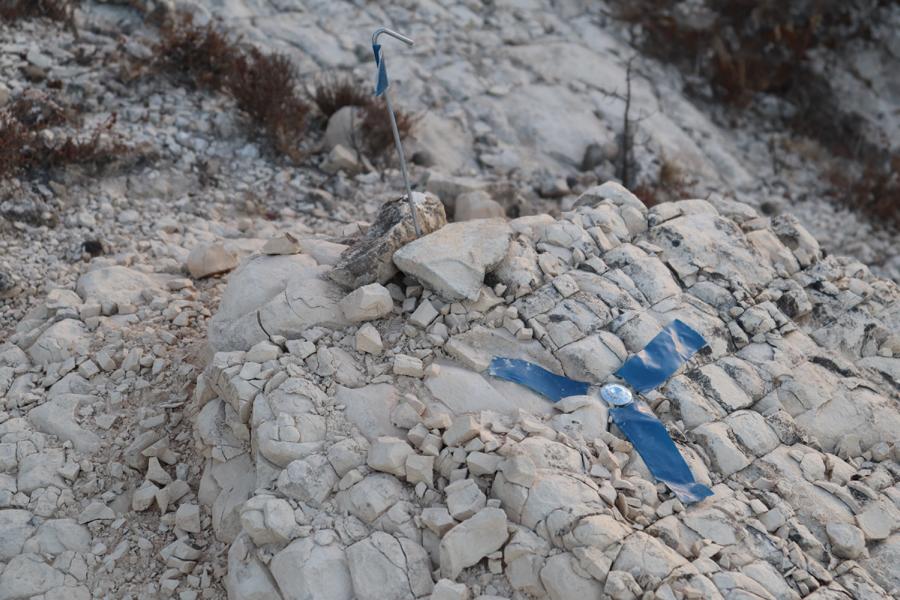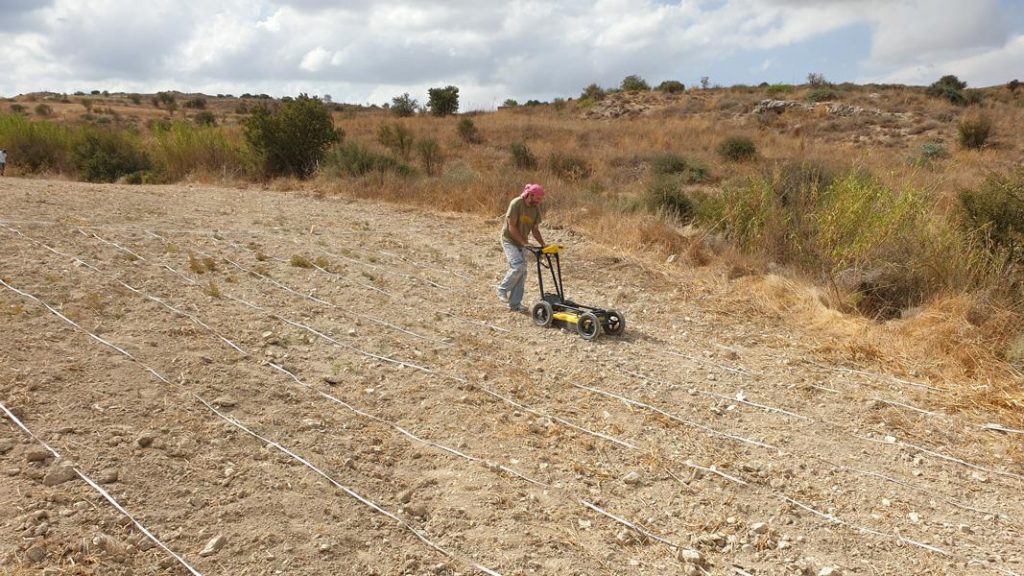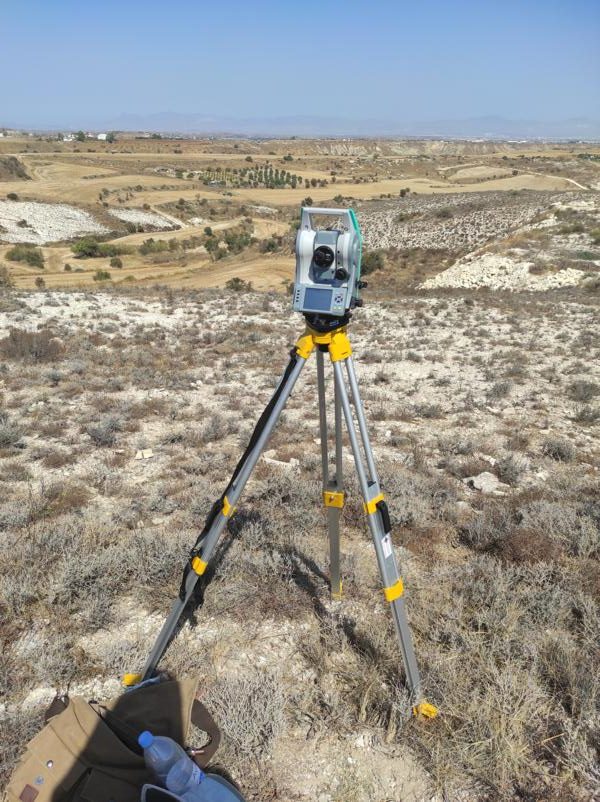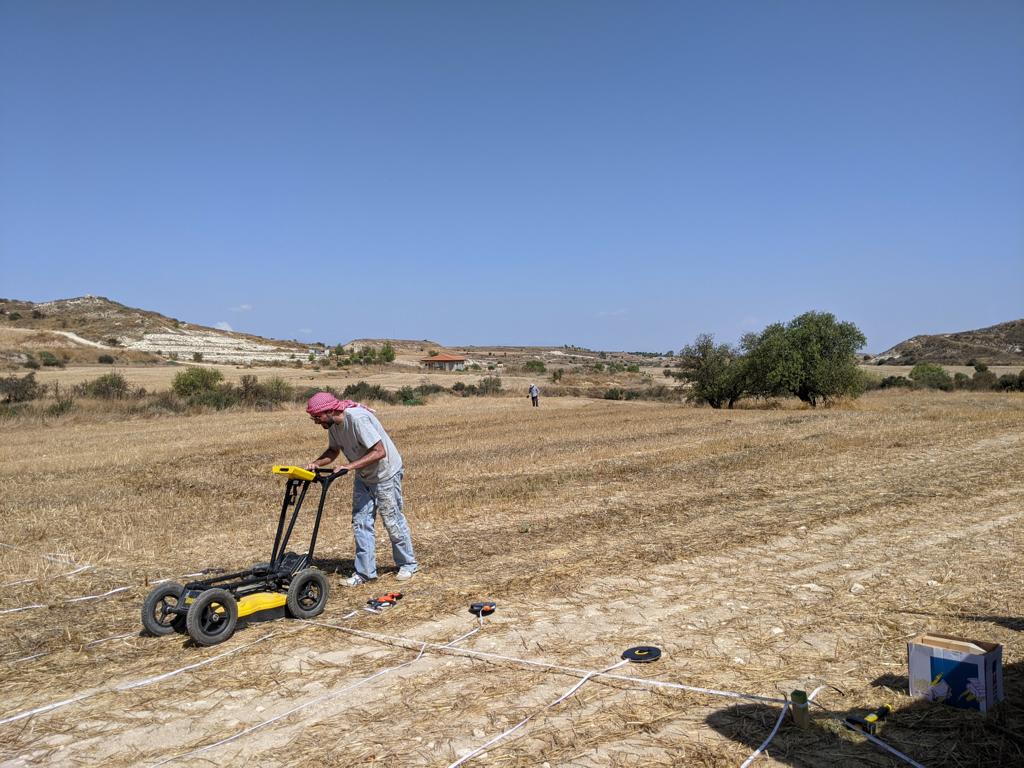Like many projects in 2020, the Frangissa project has not remained unaffected by the corona pandemic. A field school originally planned for spring 2020 together with students from the universities of Frankfurt and Kiel had to be canceled due to Covid-19. Nevertheless, it was possible to carry out an archaeological and geophysical survey approved by the Department of Antiquities of the Republic of Cyprus, in October 2020 with a small team. The promising results lay an important first basis for the “Pera-Frangissa” excavation project planned for the coming years.
Geophysical Survey
In collaboration with Prof. Dr. Apostolos Sarris (Archaeological Research Unit, Lab of Digital Humanities Geoinformatics, University of Cyprus), a comprehensive geophysical survey was carried out in the area, which has already been delimited by archive studies. The prospection covered an area of 6,500 m². A detailed, georeferenced mapping of the area was carried out by means of a high-resolution measurement using a NOGGIN PLUS GPR unit with a 250 MHz antenna. This resulted in a number of indications of architectural structures in the ground that were not visible above. An initial careful correlation of the measurement data with the stone plan published by Ohnefalsch-Richter shows that there is a correspondence regarding the apsidial structure of the building inside the courtyard complex and the western wall of the sanctuary area. However, a definitive statement can only be made by excavating the relevant locations.
Archaeological Survey
The area of almost 10,000 m² examined as part of a systematic field inspection largely corresponds to the area also recorded in the geophysical survey. It was divided into regular quadrants of 100 m², the position of which is precisely determined by surveying and correlated with the geophysical plan. These quadrants, designated with a consecutive number, were systematically explored and the artifacts visible above the surface were collected. These are in particular fragments of vessels and roof tiles, but also numerous fragments of statues and statuettes made of limestone or terracotta. The found material was statistically and typologically recorded, weighed and photographed. Diagnostic sherds were drawn and the tone value was determined according to the Munsell Soil Color Charts. The mapping of the finds and the previous analysis show that a considerable concentration of finds is emerging in the western area of the investigation area. It is also noticeable that the ceramic fragments found there are, on average, significantly larger and better preserved, while the surface ceramics of the central and eastern areas, which are often very finely preserved, show strong signs of weathering. Apparently, the fragments of the western area have only been on the surface for a relatively short time — namely since the excavations by Ohnefalsch-Richter in 1885 — while the remaining material was exposed to the weather for centuries and was repeatedly relocated by plowing.
Finds of limestone sculptures and votive terracottas are also concentrated to the west of the investigated area. The fragments found are significant and correspond to the range of votive finds found during the excavation in 1885. Fragments of horses, riders and wagons dominate the small-format, hand-formed terracottas. The large-format hollow terracottas, pre-formed from pieces on the potter’s wheel, represent dedicants — here, due to the proportions, figures of at least life size can be detected. The fragments of limestone sculptures show depictions of adorants as well as animal figures, probably also horses (or riders). The chronological spectrum of the votive ranges from archaic times to Hellenism.
If you look at the finds recorded during the archaeological survey in their entirety, the chronological framework is expanded: the oldest finds come from the Early Bronze Age, the latest finds, which were primarily made in the eastern area of the investigation area, from the late Roman-Byzantine period. In this context, reference should be made to an ancient settlement of the Roman era, already recognized by Ohnefalsch-Richter, clearly downstream, from where these late fragments could come from.
A Trial Trench from 1885
Apart from the numerous fragments of archaic-Hellenistic votive offerings, the existence of which points to the sanctuary, and whose comparatively fresh preservation shows them to be remnants of the Ohnefalsch-Richter excavation rubble, direct evidence of the activity of Ohnefalsch-Richter in 1885 could be found in several places. The remains of a nearly 15 m long trial trench were found immediately south of the sanctuary area. This trial trench is laid out in a completely straight line, and its width corresponds exactly to 2 feet — the unit of length used in the time of Ohnefalsch-Richter in Cyprus. From his reports it is known that he had appropriate probes built around the area in order to explore the further expansion of the sanctuary. The now rediscovered trial trench cuts through an ancient, double-shell wall with a wall thickness of around 60 cm, which has been preserved in this area with a height ca. 40 cm, but which may continue deeper into the ground. Since it is all around in unexcavated soil — with the exception of the trial trench -, an undisturbed stratigraphy can be expected here. This area is therefore intended for a closer examination as part of the planned excavations.
For the Future
The sientific activities, financially funded and personally supported by AMRICHA, have clearly confirmed the location of the Apollo sanctuary of Frangissa in 2020, which was discovered by Ohnefalsch-Richter in 1885 and examined in an emergency excavation. In the course of this first 2020 campaign, a surveying network has already been set up and a local GIS system created. A georeferenced 3D model of the valley was created by flying a UAV over the entire area and the basis for an elevation map was laid. Our intention is to start a regular excavation there in spring 2021.
The universities of Frankfurt (Dr. M. Recke) and Kiel (PD Dr. P. Kobusch) plan to carry out the excavations as part of a field school in order to give students of classical archeology an insight into practical field work with the most modern methods of digitization and documentation. Technical support will again be provided by AMRICHA, who will also oversee the conservation work of finds and architectural elements (Alexander Gatzsche M.A.). We are again grateful for the support from the Department of Antiquities Cyprus and the University of Cyprus, who not only actively supported the 2020 campaign, but also offer perspectives for a long-term, scientifically significant and promising project.
